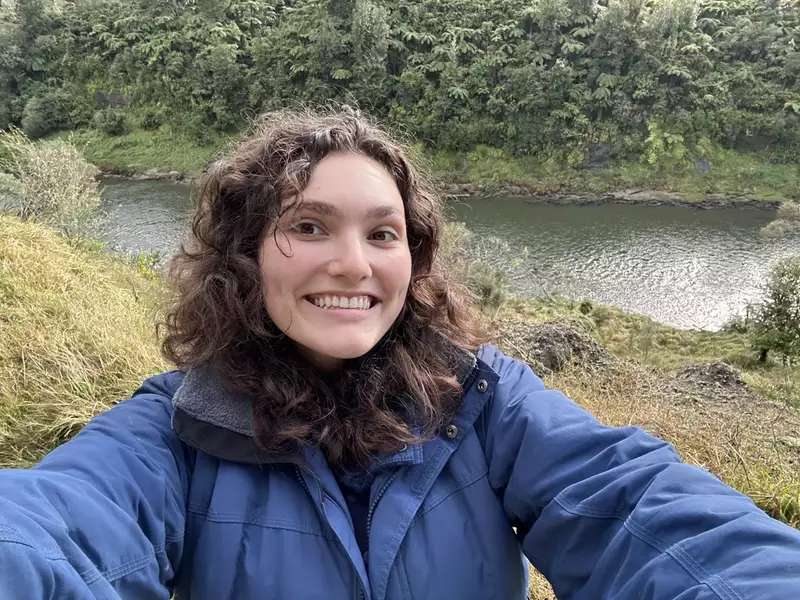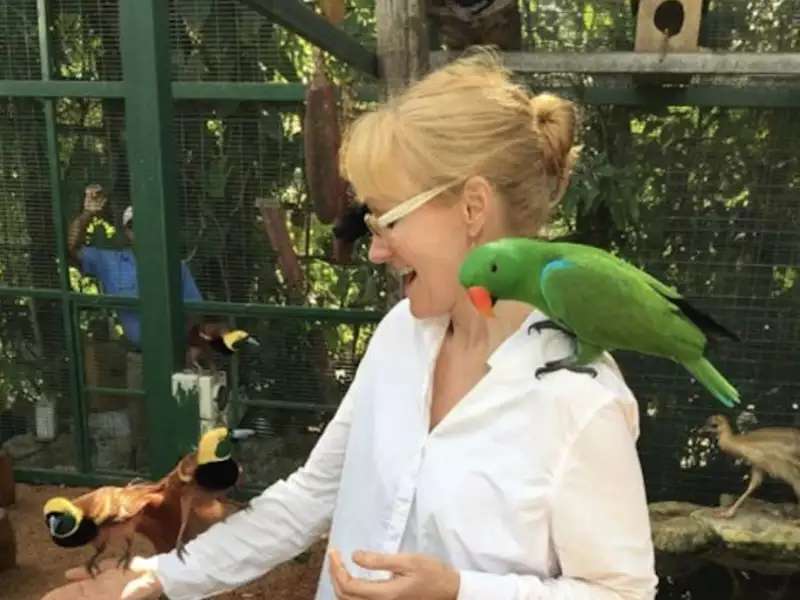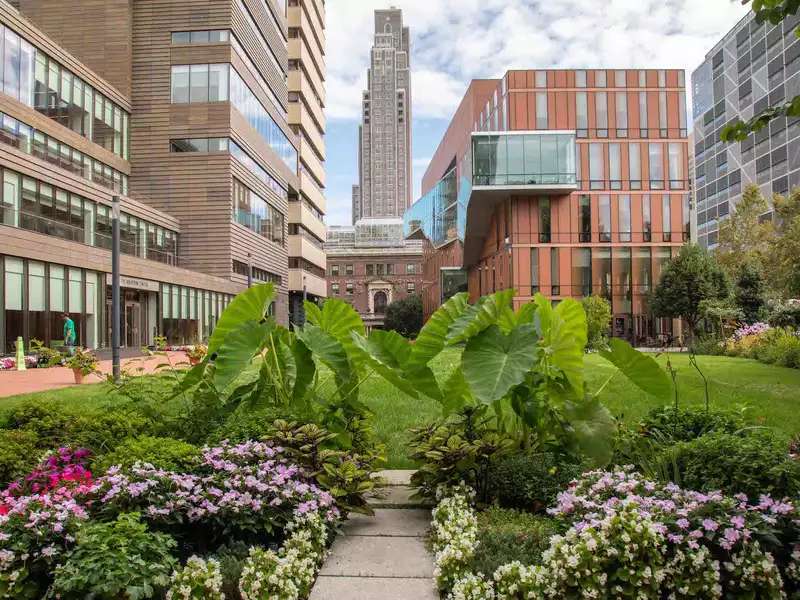Professor Hilary Callahan is on sabbatical this year, but that hasn’t stopped her from keeping plenty busy. The latest professional excursion for the Ann Whitney Olin Professor of Biological Sciences took her over 4,000 miles from Barnard’s campus to the Alaskan tundra. There, alongside chemistry major Frances Cohen ’25 and environmental science major Amelia Harris ’25, Callahan went digging for answers to further her research on plant reproductive ecology.
The project took place at the Toolik Field Station, which has been a destination for Barnard students since 2007. This was Callahan’s first time joining the ranks. The 10-day trip (July 30-August 8) was partially funded by Barnard, with additional support from the National Science Foundation’s Arctic Long-Term Ecological Research program.
Callahan’s work builds on a body of long-term research — led earlier this year by Columbia colleagues Kevin Griffin and Duncan Menge — on how carbon and nitrogen interact with tundra vegetation.
The Barnard biology professor arrived at the tundra at an opportune moment, namely a “pluck year,” when scientists are permitted to remove small portions of the vegetation and soil from a series of “long-term experimental vegetation plots,” as Callahan explained. She brought her own soil samples back to campus and put them in a freezer in Barnard’s Arthur Ross Greenhouse. After two months, she will extract the seeds and attempt to conduct several initial experiments with them.
“The [seeds] are tiny,” said Callahan. “So the best way to study them is to germinate them. Then they green up, and you can identify them when they get a little bigger.” This winter’s research will inform research in future summers.
In this “Break This Down” interview, Callahan shares what she set out to uncover during her research expedition and what she brought back to Barnard with her. Spoiler alert: It was more than soil samples.
You research “plant reproductive ecology.” What does that mean to nonscience readers, and how did it figure into your trip?
I’ve done a lot of research on annual plants that germinate, flower, and go to seed in less than a year, as in most crops. In long-lived plants like trees and in tundra plants, it’s harder to discern the best strategy to balance reproduction with long-term survival. Plants here persist by growing slowly — keeping themselves small, close to the ground, and underground.
I’m curious as to why these plants reliably flower and fruit so much, even if it’s not beneficial to them directly as plant parents. Is flowering and fruiting helpful to tundra vegetation and soils in more subtle ways? Or is it just an anciently evolved habit, persisting through tens of thousands of years of becoming otherwise specialized to the tundra’s extremes?
How is the research site at the Toolik Field Station set up?
The experiment that’s ongoing for more than 30 years is adding different levels of fertilizer to plots. For plants, the most important components in any fertilizer are nitrogen and phosphorus. Some plots have just nitrogen or just phosphorus, some have both. Walking around the edges of the experimental plots, the differences are amazing visually. With added nutrients, there is a jump in woody species. Instead of being, say, a few inches tall, many are now a foot or two tall, and quite dense and lush.
What was it like to be out in the field, compared with the familiar space of the lab back at Barnard?
The big mantra for plant ecology research is you either bring the field to the lab or bring the lab to the field, which is what NSF-funded researchers [did at the field station].
I truly love fieldwork. I’m a recreational camper, and I’ve also studied and worked out of field stations before, which made the Toolik station familiar but distinctive. First, it is so remote — we were more than a hundred miles from the nearest gas station.
Second, there is a huge emphasis on minimizing the impact of our presence out here in the wilderness. Electricity comes from diesel generators, so we were encouraged to layer up instead of turning on heaters on cold days and to rely on daylight, which is easy since the sun barely sets. All wastewater is trucked off the site, so we used all water frugally.
Finally, it was an incredible community of people — a mix of men and women, young and old, many nationalities — with different scientific interests and a real emphasis on keeping our togetherness positive.
How does your research shed light on the sort of world we’re living in?
The limits to the tundra are its short growing season and the cold temperatures in the soils. Those cold temperatures slow down the activity of decomposing organisms like bacteria and fungi. The fertilizer treatments are designed to accelerate what will happen if warmer temperatures rev up this decomposition.
The tundra will change dramatically over time. The key question is whether its vegetation and soils will continue to absorb and store carbon dioxide from the atmosphere as it has done in the past. This year’s harvest should help to validate some of the partial answers already obtained and possibly deliver new insights.
What will you bring back to campus with you, aside from the soil samples?
It is extremely disorienting to be in an entirely new social and dwelling environment and also in a new biome with plant and animal species that I only knew about from books. I was the newbie, and it felt very awkward to know nothing. This was a great reminder for me, as someone who teaches and mentors young scientists. It helped me better understand the student perspective.




